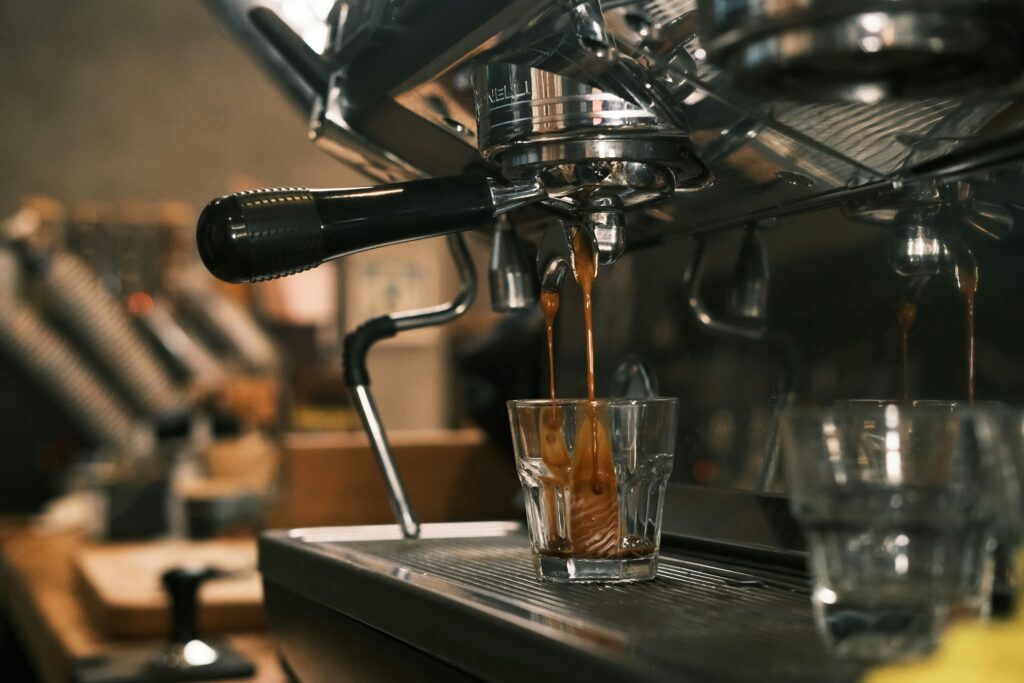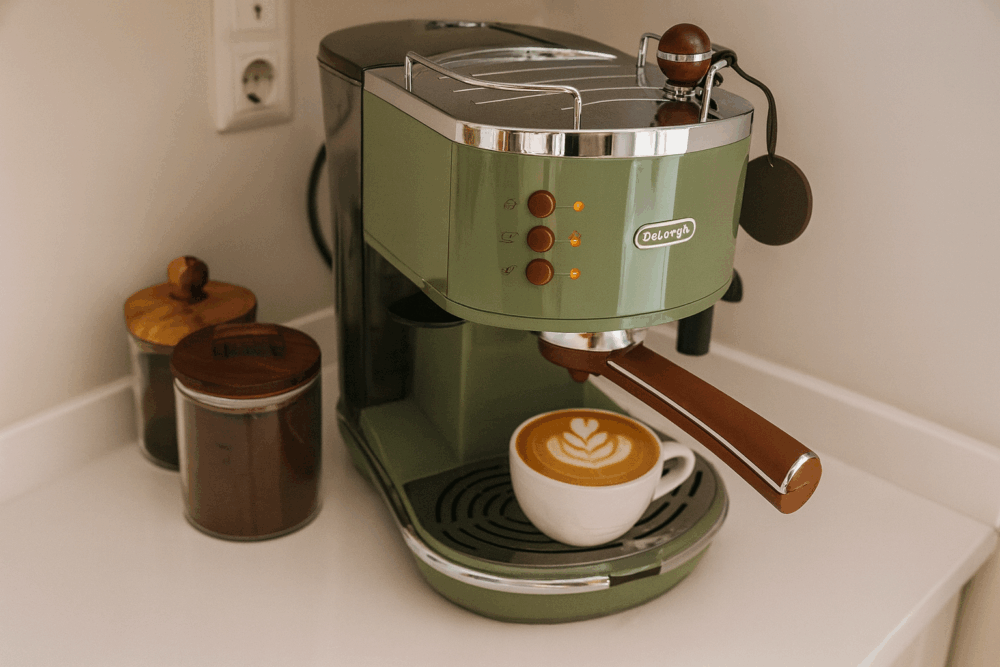If you’ve ever dreamed of brewing café-quality coffee at home but thought it required a $1,000 machine, good news: you don’t need to spend a fortune. A budget espresso machine can deliver rich, balanced espresso shots, frothy cappuccinos, and silky lattes – all from your own kitchen. But with so many options on the market, how do you know which one is worth it? In this guide, we’ll break down what to expect from a budget espresso machine, what features really matter, and which models give you the most bang for your buck. We’ll also share insights from coffee experts and show you how to avoid common beginner pitfalls.
Table of Contents
What Is a Budget Espresso Machine?
A budget espresso machine is an entry-level coffee maker designed to give you a taste of café-style espresso without the hefty price tag of professional equipment. Typically costing between $150 and $500, these machines are built with the home user in mind. They focus on being compact enough to fit on a kitchen counter, straightforward to operate, and affordable to maintain.
While they don’t include all the advanced features of high-end commercial models, they are more than capable of producing real espresso – a concentrated, rich shot of coffee created by forcing hot water through finely ground beans under high pressure. Most budget machines still provide essential elements such as a pump that can reach the necessary nine bars of pressure for proper extraction, a portafilter to hold the coffee grounds, and often a steam wand for frothing milk. For beginners, they strike the right balance: simple enough to learn on, but powerful enough to deliver espresso that’s smooth, aromatic, and satisfying.
Why Consider a Budget Espresso Machine?
Here are some key reasons why budget-friendly machines are so popular:
- Save money over café visits – A latte costs $4–$6 in most cafés. With a home setup, you’ll spend cents per cup.
- Beginner-friendly – Designed with simplicity in mind, many models help new users pull consistent shots without advanced barista skills.
- Compact and stylish – Many machines fit neatly into small kitchens or counters without taking up much space.
- Upgrade path – Perfect entry point: once you master the basics, you’ll know whether to invest in higher-end gear later.
Types of Budget Espresso Machines

When shopping for a budget espresso machine, you’ll quickly notice there are different categories, each with their own strengths and drawbacks. Understanding the differences is important before making a choice, especially if you’re new to espresso. Let’s break them down.
Portafilter (Manual/Semi-Automatic) Machines
These are the most common and traditional budget espresso machines. You grind the beans separately, tamp them into a portafilter (the handle that holds the coffee basket), and then lock it into the machine to brew. This type gives you hands-on experience with espresso-making, teaching you barista skills like dosing, tamping, and timing. They usually include a steam wand for frothing milk.
One example is the De’Longhi 15-Bar Pump Espresso Machine, which is compact, affordable, and reliable for beginners. The trade-off is that you’ll also need a grinder to use fresh beans, and the learning curve can feel steep at first.
Machines with Built-in Grinders (All-in-One)
These machines combine a grinder and an espresso machine in one unit. Instead of buying a separate grinder, you can put beans directly into the hopper, and the machine grinds them before brewing. The Breville Barista Express is a well-known example. The benefit is convenience and saving counter space, since everything is in one device.
However, the built-in grinders in cheaper models aren’t as strong or precise as dedicated grinders. And if either the grinder or brewing unit fails, the whole machine is harder to repair or replace. These are best for people with limited space who want convenience, but they’re often more expensive than standalone semi-automatics.
Fully Automatic Machines (Bean-to-Cup)
These machines do everything for you at the push of a button—grind, tamp, brew, and often froth milk too. The Philips 1200 Series Fully Automatic Espresso Machine is one example. They’re designed for maximum convenience: you press a button, and out comes an espresso or cappuccino.
The downside is that they can be expensive, they take away the hands-on element of making coffee, and maintenance can be more complicated. For many beginners, these machines are not the best way to truly learn espresso-making, but they do appeal to people who want speed and ease above all else.
Comparison Table:
| Portafilter Machines | Machines with Built-in Grinders | Fully Automatic Machines | |
| How It Works | Grind beans separately, tamp into portafilter, brew manually. | Grinder + brewer in one machine. | Grinds, brews, and often froths at the push of a button. |
| Pros | Affordable, teaches barista basics, strong espresso quality. | Saves counter space, convenient, fresh beans every time. | Very convenient, minimal effort. |
| Cons | Needs separate grinder, some learning curve. | Built-in grinders weaker in budget models, harder to repair. | Expensive, less control, not hands-on. |
| Best For | Beginners who want to learn hands-on. | Beginners with limited space who want convenience. | Convenience-first users (not recommended for learning). |
Key Factors to Know Before Buying a Budget Espresso Machine

Understanding the types of machines is just the first step. When you start comparing models, you’ll see a lot of technical terms and specifications. Here’s what they mean – and what really matters when you’re shopping for a budget espresso machine:
Bar Pressure (Pump Pressure)
Espresso is made by forcing hot water through finely ground coffee under pressure. The minimum needed for proper extraction is 9 bars. Many budget machines advertise 15–19 bars, but don’t be fooled — higher isn’t always better. What matters is stable, consistent pressure. A reliable 9–15 bar pump is more than enough for home use.
Steam Wand
This is the small metal tube used to froth milk for cappuccinos and lattes. On budget machines, wands can be weaker, meaning it takes longer to create silky foam. If making milk-based drinks is important to you, choose a machine with a decent steam wand and practice your technique.
Portafilter Size
The portafilter is the handle with a basket that holds the coffee grounds. Café machines use a standard 58 mm portafilter, which allows more coffee and better flavor. Budget machines often use smaller ones (around 51 mm). Smaller isn’t bad, but it limits how much coffee you can use per shot, which can affect strength and crema.
Boiler or Heating System
This controls water temperature stability. Espresso is sensitive: too hot and it’s bitter, too cold and it’s sour. Budget machines often have single boilers (slower to switch between brewing and steaming), while more expensive models may have dual systems for speed and stability.
Build Quality and Size
Budget machines are usually compact, great for small kitchens. But smaller size can also mean more plastic parts. Look for machines with sturdy builds and replaceable components (like removable water tanks) for longer durability.
Ease of Cleaning and Maintenance
Espresso machines need regular cleaning and descaling (removing mineral buildup). A machine that’s easy to take apart and clean will last longer. Using filtered water can also extend the lifespan significantly.
Grinder (Separate or Built-In)
Freshly ground coffee makes the biggest difference in flavor. If your machine doesn’t have a built-in grinder, budget for a burr grinder. Avoid pre-ground coffee if possible, since it loses aroma and freshness very quickly.
Expert Opinions: Are Budget Machines Worth It?
Coffee educator Lance Hedrick explored this exact question in his video, “Ultimate Budget Espresso Machine Tier List!” Watch here. His conclusion: while you won’t get the durability or precision of premium machines, you can absolutely achieve café-quality results with smart technique, good beans, and practice.
This perspective is reinforced by the SCA Coffee Brewing Handbook, which highlights that the key to excellent coffee lies in controlling brewing variables such as grind size, brew ratio, water temperature, and filtration. The handbook, considered an industry standard, shows that consistency in these factors has more influence on flavor clarity and balance than the price tag of your equipment. In other words, even a budget espresso machine can deliver great results if paired with good technique and fresh beans.
FAQs About Budget Espresso Machines
Q: Can a budget espresso machine make “real” espresso?
A: Yes, if it produces at least 9 bars of stable pressure and you use fresh, finely ground beans. Results improve significantly with a burr grinder.
Q: Do I need a grinder too?
A: Absolutely. Pre-ground coffee loses aroma quickly. A grinder ensures freshness and consistency. A hand grinder can be a budget-friendly option if you’re not ready to invest in an electric burr grinder.
Q: How long does a budget machine last?
A: Typically 3–5 years with proper cleaning and descaling. Durability improves if you use filtered water to avoid mineral buildup.
Q: What drinks can I make?
A: Espresso, cappuccino, latte, americano, and more. Most budget machines include a steam wand for milk-based drinks.
Q: Should I buy new or second-hand?
A: New is recommended for beginners, since warranties and manuals make the learning process smoother.
Conclusion: Is a Budget Espresso Machine Right for You?
If you love espresso but don’t want to spend thousands, a budget espresso machine is the perfect entry point. It allows you to enjoy café-style drinks at home for a fraction of the cost, while learning the basics of espresso brewing.
While these machines have limitations (smaller boilers, weaker steam wands), they are more than capable of producing delicious espresso when paired with fresh beans and good technique. And if you’re on the fence, just remember: many home baristas started here and only upgraded later once they truly fell in love with the craft.
Ready to start your espresso journey? Check out the De’Longhi 15-Bar Pump Espresso Machine – it’s one of the best beginner-friendly budget picks on the market.
And if you want to dive deeper into brewing guides, hacks, and equipment reviews, explore more articles on Yumm Coffee’s coffee blog.

Leave a Reply